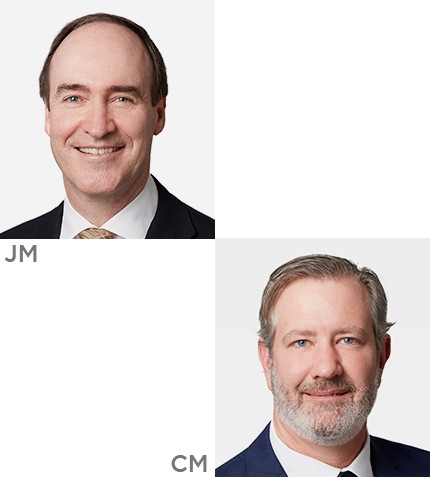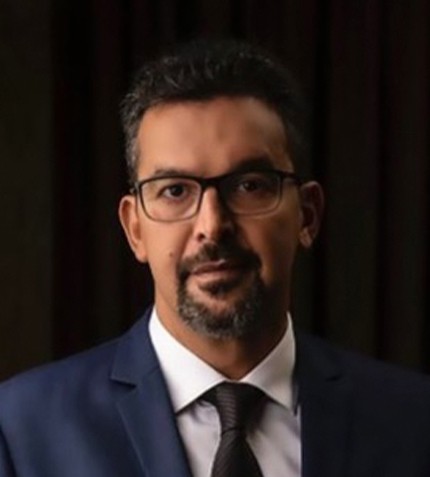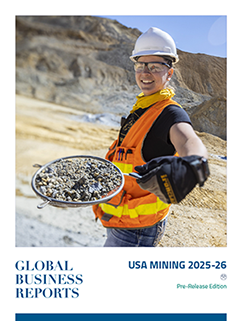
"This year represents an inflection point for Capstone, with our recently released 2025 guidance demonstrating increased cash flow generation highlighted by continued copper production growth and decreasing unit costs."
RELATED PUBLICATION
John Mackenzie and Cashel Meagher
CHAIR OF THE BOARD (JM) AND CEO (CM), CAPSTONE COPPER
Can you outline the main achievements of Capstone Copper recently?
JM: We achieved record copper production and EBITDA generation in 2024, representing strong growth. During the year, we realized the first phase of the transformation of Capstone Copper (Capstone) by ramping up Mantoverde and Mantos Blancos while improving our balance sheet strength and financial flexibility. As operations ramped up, we advanced future growth phases by releasing feasibility studies for Mantoverde Optimized project and the neighboring Santo Domingo project.
Consolidated copper production increased by 12% in 2024, primarily driven by the ramp-up of the Mantoverde Development Project (MVDP). This project added a 32,000 t/day sulfide concentrator and a tailings storage facility. The first copper concentrate was produced in June, reaching commercial levels by September and full rates by year-end. Meanwhile, at Mantos Blancos, we unlocked mill capacity through a successful debottlenecking.
What is Capstone Copper’s approach to sustainability and community relations?
JM: Our target is to reduce total GHG emissions from fuel and power by 30% by 2030. We are developing and executing decarbonization strategies through several initiatives, including adding more renewable power to our energy mix, studying independent renewable energy generation alternatives, and displacing diesel consumption. At our Chile sites, we have been calculating Scope 3 emissions since 2021, and we hope to expand to our other sites this year.
We have committed to developing Capstone’s Social Performance Standard, a company-wide framework for managing social impacts and socioeconomic contributions informed by best practices, and to have all sites assessed against the standard by 2025. As of December 31, 2023, 73% of Capstone employees were covered by collective bargaining agreements. We work diligently with our unions to resolve any employee grievances.
With the recent change of President in the US and upcoming elections in both Canada and Chile, what do you predict will happen in the copper space moving forward?
JM: The copper space has been volatile recently due to various macroeconomic factors, including the impacts of US tariffs and concerns around growth in China. While the near-term copper price has been variable, the medium- to long-term fundamentals remain strong. Even with slower economic growth in areas like Europe and China, copper consumption continues to grow at attractive rates due to the push for renewable energy. While China has driven copper demand over the past two decades, future demand will likely be more balanced globally. Although some aspects of copper use, like in construction, will correlate with GDP, we expect a more pronounced divergence driven by the global imperative for decarbonization.
What most differentiates copper, however, from other critical metals are the supply-side constraints. There have been very limited discoveries of copper over the past 20-30 years. Existing mines are seeing significant grade declines, and new deposits face increasing complexities. In the long term, higher prices might incentivize additional copper mines, but it is not just economics that restrict new developments. Environmental, social, and infrastructural factors also play a significant role. Whereas it used to take 2-5 years to bring a new deposit to production, today it can take 8-12 years or more.
What is in store for Capstone Copper in 2025?
CM: This year represents an inflection point for Capstone, with our recently released 2025 guidance demonstrating increased cash flow generation highlighted by continued copper production growth and decreasing unit costs. Our 2025 forecasted production volumes of 220,000 to 255,000 t of copper are expected to increase by approximately 19% to 38%. We have several key priorities for 2025. Firstly, we will be focused on operational execution across our portfolio through the implementation of our Asset Integrity Program across all our sites, delivering strong operational performance and benchmarking to drive production and cost efficiencies. Secondly, we intend to commence construction of the highly attractive Mantoverde Optimized project in the second half of 2025. This is a high-return, low-cost project that will deliver roughly 20,000 t/y over an extended 25-year mine life for a capital cost of only US$146 million. Finally, we will continue to de-lever through internally generated cash flows whilst advancing studies to provide growth optionality and progressing the Santo Domingo partnership process and financial strategy in preparation for a sanctioning decision.











